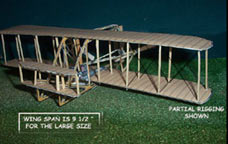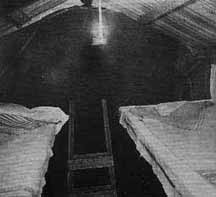

The Wright Brothers controllable Glider of 1902


In 1902 this glider was the first man-carrying flying machine to have three-dimensional controls. It then led to the Wright Brothers famous powered flight in the Wright Flyer a year later.
Wright Brothers Glider
The Wright brothers first became seriously interested in solving the problem of human flight in 1899. After conducting extensive research, they concluded that the key to success lay in the pilot's ability to control the aircraft. They proceeded to design, build, and test a series of aircraft that began with a kite in 1899, followed by three gliders in 1900,1901, and 1902. After a successful 1902 season, the Wrights were confident they had solved the problem of control.
They were then able to focus their attention on determining the requirements for an engine and propellers that would sustain them in flight. On December 17, 1903, for the first time in history, an airplane took off, moved forward under its own power, and landed at a point as high as that from which it had started. Three more flights followed that day demonstrating, beyond any doubt, that their machine was capable of sustained flight under the complete control of the pilot.
 This is a sketch of a helicopter type toy that was popular from the 1880s |
 A gentle launch at Kitty Hawk |
 The Wright Glider being tested for stability |
 This was the tent that was set up alongside the wooden work shop. It was used to house the crew that was helping with the test flights |
 A wonderful photo of the Wright Flying School around 1908 |
 This is the loft of the Wright Brother's work shop |
 This was one of the earlier kites |
 Hundreds of flights were made in the Wright glider |
 The Wright Flyer patent |
 The sheds at Kitty Hawk were abandoned when the Wright Airplanes were improved and in production.. |
Specifications for the Wright Glider
 |
Crew: 1 Length: 16 ft 1 in Wingspan: 32 ft 1 in Height: 8 ft Wing area: 305 ft² Empty weight: 117 lb Performance Range: 622.5 ft |
 |
| The crashed Wright Glider. |



